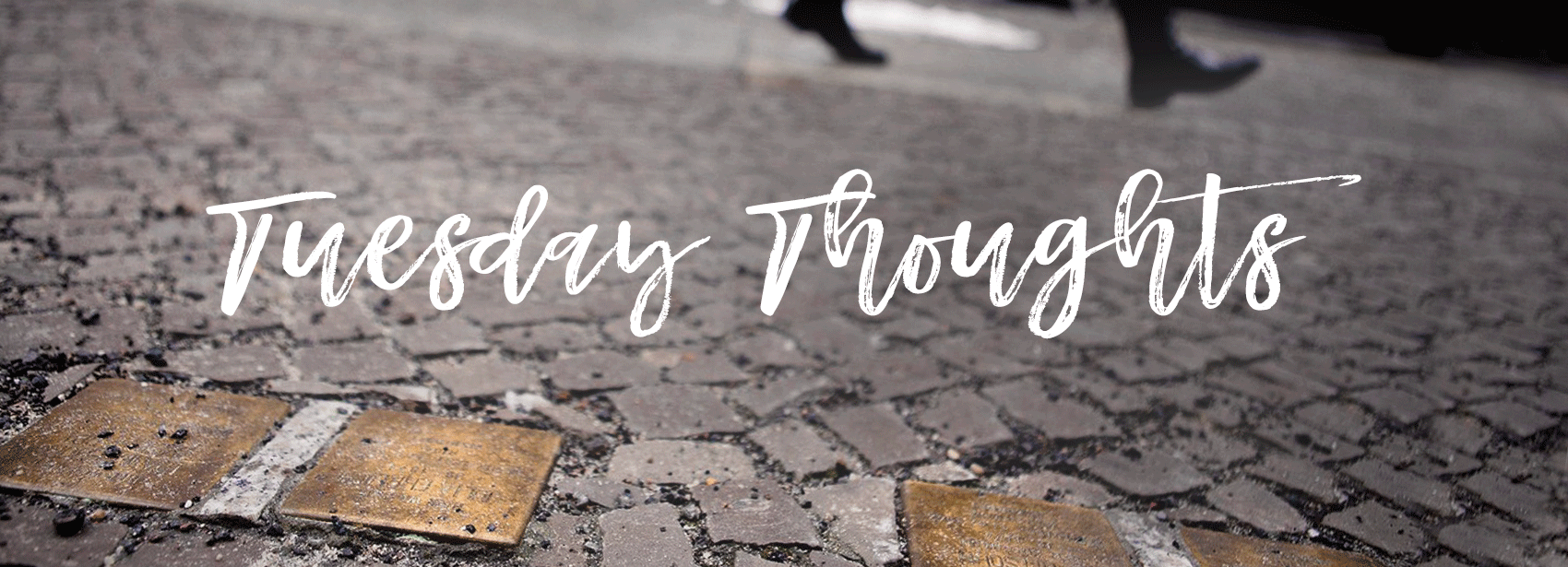All Articles
The Emblem of Suffering and Shame

In Austria, there’s a subtle reminder of a time that many of us have long forgotten. There, amongst the many cobblestones that make up the streets of Salzburg, sits two concrete cubes, each 10 by 10 centimeter in size, bearing a brass plate with the following inscriptions in German:
On one it reads...
Here lived Ludwig Keisler. Deported 1942. Theresienstadt (Terezin). Murdered 1943.
On the other...
Here lived Klara Keisler. Deported 1942. Theresienstadt. Auschwitz. Murdered 1943.
A Stolperstein, meaning literally a stumbling stone, was a project initiated in 1992. It’s aim? To commemorate individuals at exactly the last place of residency which was freely chosen by the person before he or she fell victim to Nazi persecution or extermination. Stolpersteins are not placed prominently, but are rather discovered by chance, only recognizable when passing by at a close distance.
Today, over 70,000 of these minute brass cobblestone cubes dot the landscape in over 530 towns and cities across Europe, making it the world’s largest decentralized memorial.
Ludwig Keisler. Klara Keisler. Husband and wife. No tombstone. No gravesite. Just a 10 by 10 minute reminder of a terrible atrocity.
Let me tell you of another seemingly insignificant memorial...
In its most common form, the cross consisted of two pieces of wood: The upright and the crosspiece. Nothing elaborate. Simple in design.
You see crucifixion was a method of capital punishment in which the victim was tied or nailed to a large wooden beam and left to hang, perhaps for several days, until eventual death from exhaustion and asphyxiation. Crucifixion was usually intended to provide a death that was particularly slow, painful (hence the term excruciating, literally "out of crucifying"), gruesome, humiliating, and public, using whatever means were most expedient for that goal.
Cicero, for example, described crucifixion as "a most cruel and disgusting punishment" , and suggested that "the very mention of the cross should be far removed not only from a Roman citizen's body, but from his mind, his eyes, his ears". Elsewhere he says, "It is a crime to bind a Roman citizen; to scourge him is a wickedness; to put him to death is almost parricide. What shall I say of crucifying him? So guilty an action cannot by any possibility be adequately expressed by any name bad enough for it."
In the first century, it was a capital punishment reserved for the dregs of society. Dotting the landscape of the Roman Empire, it was a reminder.
For the Roman is was a reminder of suffering and shame.
But for the Christian it was something else.
The apostle Paul makes an interesting statement to the church at Corinth when he said,
For the message of the cross is foolishness to those who are perishing, but to us who are being saved it is the power of God.
1 Corinthians 1.18
We have become so accustomed to the cross that it is hard to understand what is so deplorable about the cross. In religious culture the cross has been turned into an icon. What I want us to remember about the cross is this. It is this kind of repulsion that people had in the first century when you spoke about the cross. The cross was not hopeful. The cross was not joyful. The cross was not sanitized. The cross was deplorable. The cross was despicable. The cross was something no one wanted to talk about. The cross was shameful.
And yet, “... to us who are being saved it is the power of God.”
Every first day of the week, we are asked to remember. Twice Paul tells the Corinthians, “Do this in remembrance of Me” (1 Corinthians 11.24, 25).
A simple, seemingly insignificant memorial. We should be amazed and saddened. Not that our Lord died. But that He died that kind of death. Deplorable. Despicable. Shameful.
Ironically when Jesus was on the cross, He was mocked; “He saved others and he cannot save Himself; Come down from the cross and save yourself” (Matthew 27.42).
But He stayed on the cross. For you and for me. To save us. And so, we remember. And we rejoice in the face of such a gruesome, humiliating form of execution. Why? Because through that death. His death. We are reconciled back to the Father (Ephesians 2.13-21).
A subtle reminder of a historical event that many have long forgotten. And if we are not careful, can become a distant memory to us as Christians if we don’t comprehend the magnitude of its importance.
Do you love that old cross? Where the dearest and best for a world of lost sinners was slain? We are to see Jesus today and Him crucified.
On two pieces of wood.
And remember.



